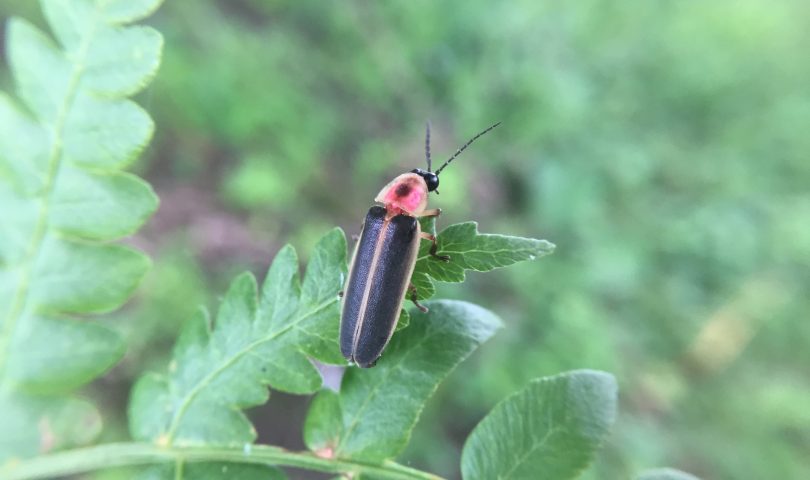The West Virginia Department of Natural Resources (DNR) is seeking input from the community to document firefly species in state parks and develop conservation efforts for the beloved insects.
Most folks can recall at least one childhood memory that contains fireflies – also known as lightning bugs. Chasing the insect’s flash to catch one, slowly opening your cupped hands to watch it sit in your palm, releasing a gentle glow. Sitting on your grandparents’ porch swing, watching dozens of flickering yellow lights throughout the yard, a mirror of the night sky above. Roasting marshmallows over a fire while camping, the insects continuing their light show around your festivities. Perhaps you’ve continued this tradition with your own children, watching their excitement as they stand in a yard of dancing lights.

In recent years, declining firefly populations have concerned biologists across the country. Here in West Virginia, the DNR aims to collect the data necessary to begin conservation efforts for the nearly 40 unique firefly species in the state and provide future generations the opportunity to continue this appreciation for such a remarkable insect.
Light pollution, habitat loss and pesticides are the main threats to firefly species. In order to begin addressing these issues, the DNR’s last community survey of firefly species in 2020-21, Light Up West Virginia, sought reports of firefly sightings to determine which species of firefly populate the state. Now, the agency seeks to understand firefly diversity within West Virginia’s state parks, state forests and rail-trails, in order to establish conservation plans on these public lands.
With over 3,000 responses to the last survey, DNR zoologist Mack Frantz hopes the second part of Light Up West Virginia will not only yield similar feedback but will also encourage the community to visit the Mountain State’s public lands and appreciate what nature has to offer.
Through fall of 2024, the DNR encourages visits to West Virginia’s state parks, state forests and rail-trails to track the movements of fireflies and report findings through an online survey. Firefly activity depends on the species, with some most active at sunset or after dusk, in forests or open fields, through different times of the year – this means you can enjoy and report firefly displays at various times and locations.
“Once we learn what’s on our public lands, then in the future maybe we can set up designated wildlife viewing areas where guests can learn more about West Virginia’s fireflies,” said Frantz.
Citizen science is vital to gaining a diverse understanding of what West Virginia’s wildlife has to offer, providing biologists with a broad data pool to analyze and understand where conservation efforts will be most efficient.
“We are the third most forested state in the nation, and most of our forests are privately owned. It really is our citizen scientists that are the main stakeholders and can tell us what kind of cool creatures we have in our state,” said Frantz.
Of all animals for the community to rally behind, the firefly is certainly a top contender, with its one-of-a-kind appearance and cultural significance.
“If you can consider any insect charismatic, it would definitely be fireflies,” said Frantz. “We all grew up catching them in our grandma’s backyard, catching them in jars and watching them flash. We all that have connection.”
In order to continue this childhood memory that spans across generations, conservation is needed, and community input can be a vital first step, Frantz explained.
For more information, or to report firefly sightings at a West Virginia state park, forest or rail trail, visit wvdnr.gov/plants-animals/surveys/fireflies/.




